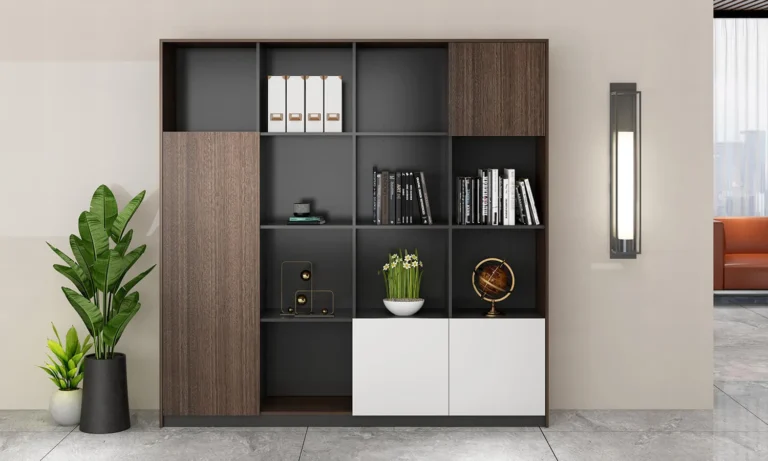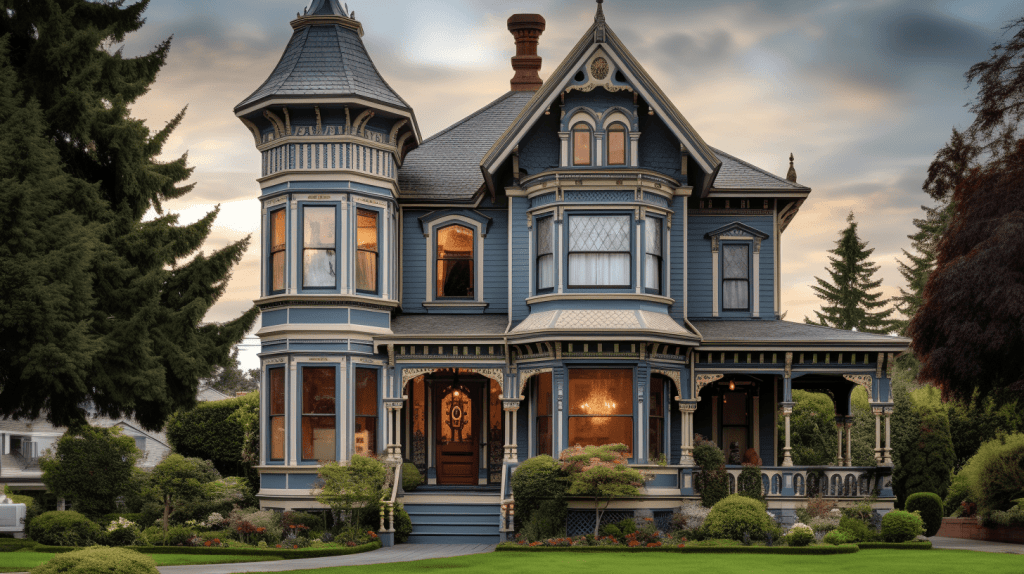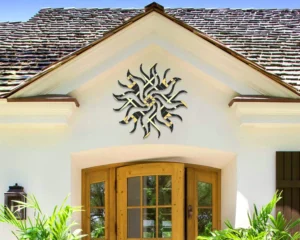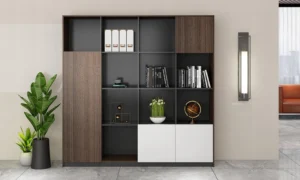As Emily walked down the quiet, tree-lined street of her new neighborhood, her eyes were drawn to the towering home at the end of the block. Its intricate trim, towering spires, and colorful facade stood in sharp contrast to the modern homes that surrounded it. She had always admired Victorian houses for their whimsical beauty, and now, living in one herself, she felt like she was stepping into another era. As she crossed the wraparound porch and opened the tall, wooden front door, she imagined what life might have been like over a century ago when the house was first built. The grand staircase creaked beneath her feet, and sunlight filtered through the stained-glass windows, casting rainbow patterns on the hardwood floors. Emily couldn’t help but wonder: who had lived here before her, and what stories did these walls hold?
For many homeowners like Emily, Victorian houses offer more than just a place to live—they provide a glimpse into the past, a connection to a time when architecture was ornate and attention to detail was paramount. Homes were designed to be both functional and artful. In this article, we’ll dive into the history and features of Victorian homes, explore why they remain so popular today, and look at some statistics on their lasting appeal in the real estate market.
A Brief History of Victorian Architecture
Victorian homes, named after Queen Victoria of the United Kingdom, who reigned from 1837 to 1901, were the dominant architectural style during her era. Victorian architecture emerged during the Industrial Revolution when mass production and new materials made it possible to create intricate designs at a lower cost. This period gave rise to several distinct styles under the broader “Victorian” label, including Gothic Revival, Queen Anne, Italianate, and Second Empire.
The hallmark of Victorian homes is their ornate detailing and eclectic mix of styles. Unlike the symmetrical and restrained designs of earlier periods, Victorian homes were exuberant, with towers, turrets, large porches, steep roofs, and brightly painted facades.
1.1. The Spread of Victorian Homes in America
Although Victorian architecture originated in the United Kingdom, it quickly spread worldwide. In the United States, Victorian homes began appearing in the mid-19th century, especially in rapidly growing cities like San Francisco, New York, and Boston. As railroads expanded, they allowed for the transport of mass-produced building materials and prefabricated elements, which helped drive the proliferation of Victorian homes.
According to the National Trust for Historic Preservation, Victorian houses became particularly popular in America between 1870 and 1900, with thousands being built across the country. San Francisco is perhaps the most famous city for Victorian houses, with its colorful “Painted Ladies” being some of the most photographed homes in the world. (Source: National Trust for Historic Preservation, 2020)
Key Features of Victorian Homes
Victorian homes are easily recognizable due to their elaborate and often whimsical design elements. The following are some of the most common features you’ll find in a Victorian house:
2.1. Asymmetrical Facades
Unlike earlier architectural styles that favored symmetry and clean lines, Victorian homes are known for their asymmetry. Houses with multi-level facades, bay windows, and sections that jut out at different angles are common, creating a sense of movement and grandeur.
2.2. Towers and Turrets
Many Victorian homes feature towers or turrets—circular or polygonal structures that extend upward, sometimes capped with a cone or spire. These elements were purely decorative and often gave the home a castle-like appearance.
2.3. Ornate Trim and Detailing
Victorian homes are famous for their intricate woodwork and “gingerbread” trim. Delicate carvings, brackets, cornices, and scrollwork are commonly found around doors, windows, and rooflines, adding to the visual complexity of the house.
2.4. Steep Roofs and Gables
The rooflines of Victorian homes are typically steep and complex, often with multiple gables (triangular sections at the end of a pitched roof). This not only added to the dramatic aesthetic but also allowed for more attic space, which was often used for storage or even extra bedrooms.
2.5. Stained Glass Windows
Stained glass was a popular decorative feature in Victorian homes, especially in entryways, transom windows, and stairwells. The colored glass was both a functional way to filter light and a decorative statement, often featuring intricate patterns or even images.
2.6. Bold and Varied Color Palettes
Victorian homes are often brightly painted in multiple colors, a tradition that started during the late 19th century when aniline dyes made a wide range of paint colors more affordable. The term “Painted Ladies” is used to describe Victorian houses with vibrant, multi-colored facades, such as those in San Francisco.
Victorian Homes in Today’s Real Estate Market
Victorian homes remain highly sought after in today’s real estate market. Their unique charm, historical significance, and architectural beauty make them a favorite for buyers who are drawn to the aesthetic and nostalgic qualities of these homes.
3.1. Demand and Pricing
While some people are willing to pay a premium for modern, minimalist homes, others are drawn to the character and craftsmanship of Victorian houses. According to a report by Zillow, homes built before 1940 (many of which are Victorian) sell for an average of 21% more per square foot than modern homes. (Source: Zillow, 2021 Real Estate Trends Report)
In cities with a rich history of Victorian architecture, such as San Francisco or Boston, prices can be even higher. In San Francisco, for instance, Victorian homes can command millions of dollars. A report from Curbed San Francisco revealed that in 2022, the average price for a Victorian home in the city was over $3.5 million, compared to the citywide median home price of $1.7 million. (Source: Curbed San Francisco, 2022)
3.2. Preservation and Renovation
Because many Victorian homes are over 100 years old, they often require more upkeep than newer homes. Homeowners may need to invest in restoration projects, such as repairing original woodwork, updating old electrical systems, or restoring historical details like stained glass windows. However, these efforts can pay off in terms of both resale value and personal satisfaction. According to the National Association of Realtors (NAR), historic homes that are well-preserved or restored can sell for up to 26% more than comparable non-historic homes. (Source: NAR, 2020 Historic Homes Report)
Why Victorian Homes Are Still Popular Today
Despite their age and the potential challenges of maintaining an older property, Victorian homes continue to capture the hearts of homebuyers for several reasons:
4.1. Architectural Beauty
Victorian homes are often described as works of art. The craftsmanship and detail that went into their design set them apart from the cookie-cutter homes of today. For buyers who want their home to be a reflection of their personality and style, Victorian houses offer an unparalleled level of uniqueness.
4.2. Nostalgia and Historical Significance
For some, the appeal of a Victorian house is tied to a sense of nostalgia and connection to the past. These homes evoke images of a bygone era, offering a tangible link to history. In many cases, Victorian homes were built at a time when neighborhoods were close-knit, and homes were passed down through generations, adding to their sentimental value.
4.3. Spacious and Versatile Layouts
Many Victorian homes were built with multiple floors and spacious layouts, offering ample room for growing families. Attic spaces can be converted into bedrooms or offices, while large porches and backyards offer outdoor living spaces that modern homes may lack.
Challenges of Owning a Victorian House
While Victorian homes are admired for their beauty and character, they do come with some unique challenges. Older homes often require more maintenance, including:
- Updating electrical and plumbing systems: Many Victorian homes were built before modern building codes, so updating these systems is a common and necessary renovation.
- Restoring original features: Maintaining a Victorian home’s historical integrity often means repairing or replacing original elements like wood trim, plaster walls, or stained glass.
- Heating and cooling: Older homes can be less energy-efficient, with drafts, outdated insulation, and single-pane windows that make heating and cooling a challenge.
While these challenges can be daunting, many Victorian homeowners find that the rewards far outweigh the difficulties, especially when the house has been restored to its former glory.
Conclusion:
A Living Piece of History
For homeowners like Emily, a Victorian house isn’t just a place to live—it’s a living piece of history. With their intricate details, charming quirks, and undeniable beauty, Victorian homes have a timeless appeal that continues to captivate buyers today. Whether you’re drawn to their architectural elegance, their connection to the past, or simply their spacious and inviting layouts, owning a Victorian home is a unique experience that combines both art and history.
While maintaining a Victorian house can be a labor of love, it pays off in terms of character, historical significance, and long-term value. For those who appreciate the craftsmanship and attention to detail that defined the Victorian era, these homes offer a unique opportunity to live in a piece of history while creating new stories of their own.
















